Characteristics of Sidamo Coffee grading system what are the grades of Ethiopian coffee beans G1 and G2
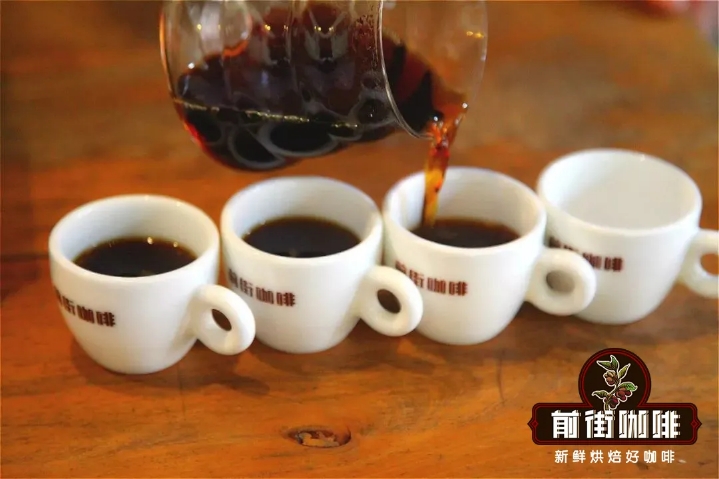
Professional coffee knowledge exchange more coffee bean information please follow the coffee workshop (Wechat official account cafe_style)
Friends who often buy Ethiopian beans will see what G1, G2 and G3 are written on the package. What do these represent? What is the difference between them? Qianjie Coffee is here to talk about what Ethiopia G1 and G2 stand for.
Ethiopian coffee grade
First of all, the Ethiopian Ministry of Agriculture has a department called CLU (Cupping and Liquoring Unit), which is responsible for the quality approval of exported coffee, which includes the very important responsibility of grade definition; CLU existed before ECX.
Before the advent of ECX, for washed coffee, the export grade was G1 and G2; for sun-cured coffee, the export level was G3, G4, G4, G5, which means that the highest level of sun exposure was G3.
After the emergence of ECX, there is a redefinition of classification, and there is no difference in the classification name of washing, while the definition of sunlight appears for the first time G1, which is why Esser's sunburn is G1 and G2, while G3 begins to decrease slowly.
Ethiopia's old grading method was simply classified according to the number of defects. The highest grade of beans washed with water was Grade 1-G1 and the highest grade of sunlight was Grade 3-G3. The current grading method is based on the combination of physical attribute characteristics and cup flavor characteristics established by ECX.
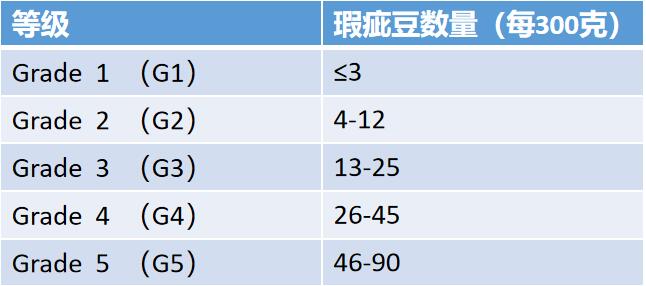
All coffee is defined as three types according to the way it is treated, insolated or washed:
A. Speciality (washed & unwashed): the number of defects is small, and the cup test has high flavor quality.
B. Commerical (washed & unwashed): not up to the boutique level, but higher than the domestic consumption grade
C. Local / Domestic (washed & unwashed): coffee with a large number of defects (unripe beans), out of season and poor storage.
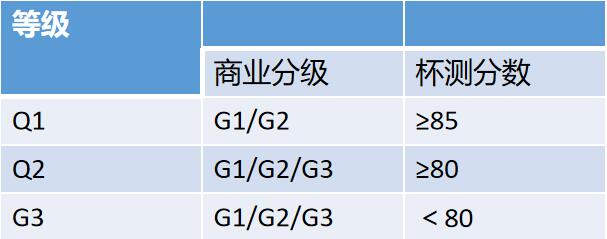
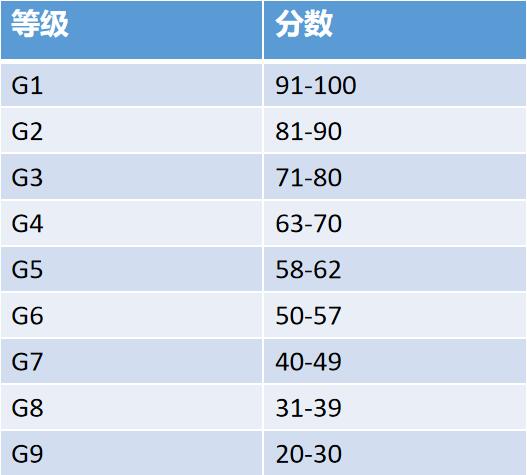
Among them, Specialty and Commerical are aimed at the international export market, and Local is the coffee sold for the domestic market.
The specific grading and scoring criteria of ECX are as follows:
a. Score definition of washing treatment method
1. Physical characteristics account for 40%: number of defects (20%), appearance size (10%), color (5%), smell (5%).
2. 60% of the cup quality: cleanliness (15%), acidity (15%), taste (15%), flavor characteristics (15%).
b. Score definition of solarization treatment
1. Physical characteristics account for 40%: number of defects (30%), odor (10%)
2. 60% of the cup quality: cleanliness (15%), acidity (15%), taste (15%), flavor characteristics (15%).
c. Overall summary:
1. According to the method of treatment, all coffee is classified as: sun exposure, water washing.
two。 Each scored 9 grades of G1-G9 according to physical characteristics and cup test basic quality.
3. The G1-G3 was tested again according to the SCAA standard, and its flavor properties were evaluated in more detail, and the G1 and G2 with no less than 85 points were rated as Q1.
4. It is rated as Q2 for G1meng G2 G3 between 80 and 85, and G3 for all G1 Magi G2 G3 with scores below 80.
5. Q1 and Q2 are classified as Specialty Grade exports. G4-G9 kept the original grade unchanged and was classified as CommercialGrade export together with G3.
Washed beans Grade1 represents 3 defective beans per 300g raw beans, and Grade2 represents 4 defective beans per 300g. Of course, in fact, the standards of defective beans between sellers and buyers must be a little different (otherwise, why else can we pick out so many defective beans? ), but the comparison of defect rates is still easy to tell. The defective beans in the G1 are significantly less than those in the G2, which means that, excluding the effects of specific flavor and roasting, Ethiopian G1 coffee beans are of higher quality and higher score than G2 coffee beans, at least clearly distinguishable in terms of defective flavor.
We now know that G1 and G2 are Ethiopian coffee grades, so what's the difference in flavor? The editor chose Sidamo Solar G1 and G3 to compare!
From the beans, we can see that the overall appearance of G1 is much better than that of G3, it looks more uniform, and there are relatively few defective beans.
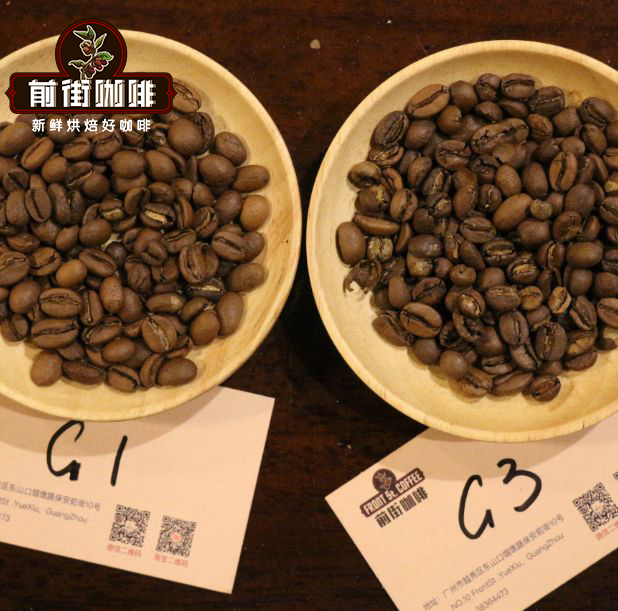
Through cup test and comparison, we found that Solar Sidama G1 and G3 are good in sweetness and sour quality, but G1 is clearer and brighter in flavor.
In fact, if it is not compared to drink, then the difference between the two will not be too big, G1, G3 is mainly in the difference in defect rate, from the appearance of beans will be more obvious, and G1 beans will have less defective flavor.
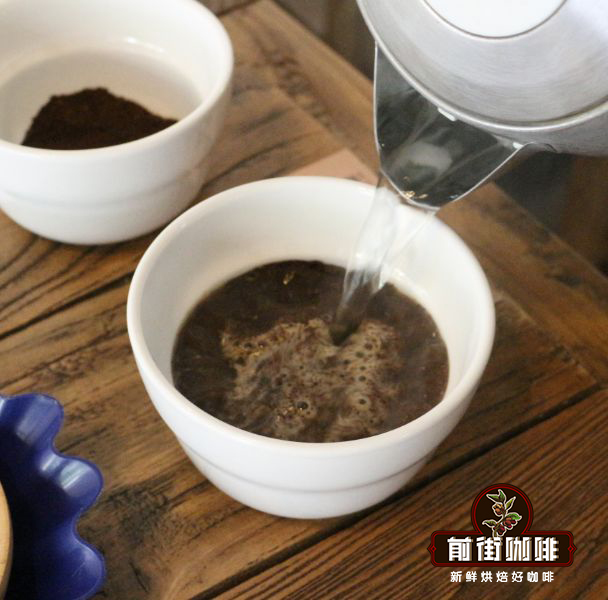
What kind of G1 coffee beans does Sidamo have?
Qianjie Coffee Ethiopia Sakuran 4.0
Producing area: Gujinhambela
Processing plant: Buku Able
Altitude: 2350 m
Variety: Dega
Treatment: insolation
Grade: G1
Batch: new batch in 2020
Flavor: rose, cream strawberry, citrus, passion fruit, oolong tea
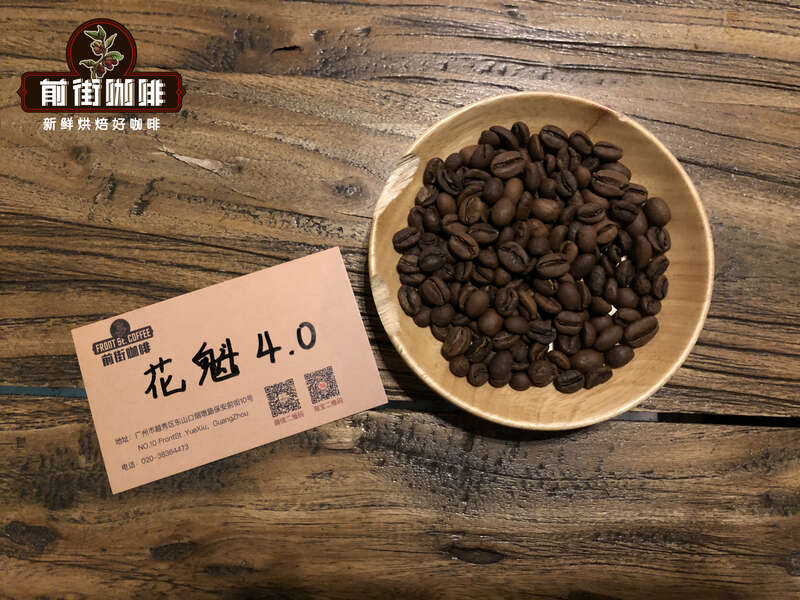
Coffee producing area
The Guji producing area, which once belonged to the Sidamo producing area, has been independent into a new producing area by the Ethiopian Commodity Exchange (ECX) in 2010. The Guji producing area, located in the southeast of Yejasuffi, is an area with complex topographical changes such as towering mountains, valleys and plains. The geology of this area belongs to the nutrient-rich black soil (Vertisol), the depth of the soil is nearly two meters, and the average elevation is more than 1800 meters. The significant temperature difference between day and night created by geographical characteristics makes the local area have various local conditions for producing high-quality coffee.
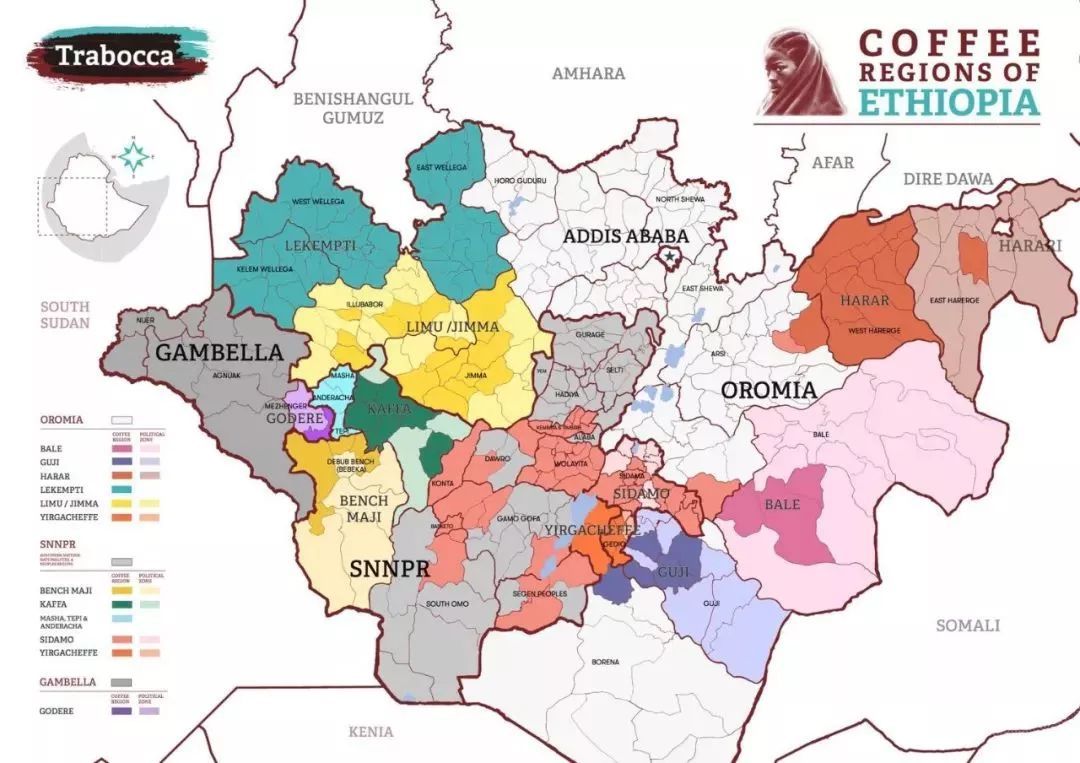
Humbera is located in GUJI, the largest coffee producing region in Ethiopia, and the administration is subordinate to the state of Oromia. The west of Hambella is across the mountain from kochore. The two producing areas are separated by highlands with an elevation of 3200 meters and a width of about 30 kilometers, and are connected with the shakiso,Uraga and Kerchaz producing areas of Guji in the east and south, respectively. It is the highest coffee producing area in Ethiopia (Harrar is the main producing area in Ethiopia).
In all these estates and processing plants, strictly speaking, only sun-dried coffee beans from the "Buku Abel" processing plant can be called "Sakui coffee beans". This is why Sakui 2.0, Sakui 3.0 and Sakui 3.1 appeared in 2018 and 2019, respectively.
The original Sakuran was included in Sakuran 2.0 and Sakui 3.0. In the above two-year batches of beans, Qianjie Coffee found that the flavor was very close to that of the original Sakuran, but the mellow thickness and afterrhyme were not as good as those of the original Sakuran in 2017. but surprisingly, we can sometimes identify the same raw beans as the original Sakuran from these two batches of raw beans. As for Huakui 3.1, during the cup test in Qianjie, it was found that it was far from the original flavor of Sakui, but more close to the flavor of rose summer (not referring to the rose summer of Panama, but similar to the rose summer flavor of Rose Summer Village. These two kinds of beans are actually completely different styles of beans), we also confirmed this change from raw bean merchants.
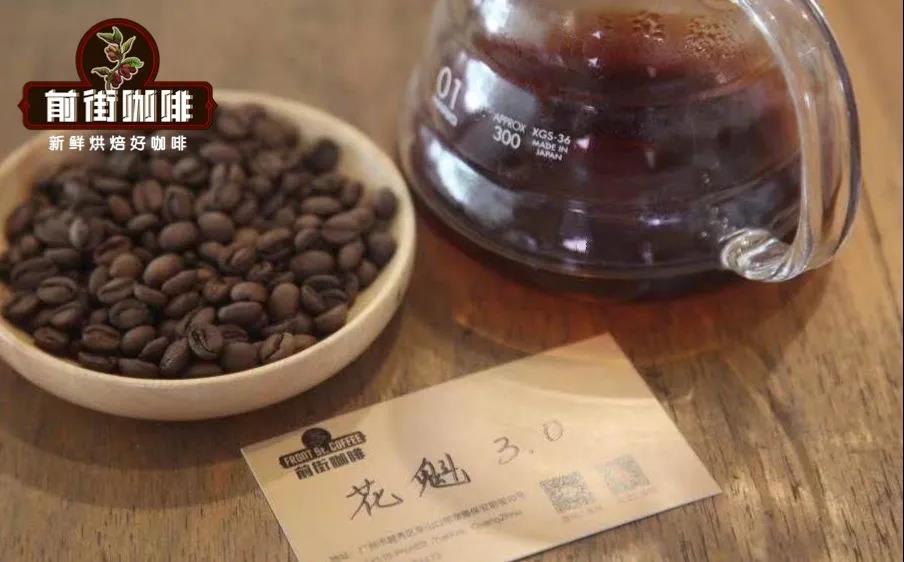
It is rare for beans with multiple flavors to appear in the same bean in the same year. If you understand the origin of Huakui, and then understand its development and changes after winning the championship, you will understand the reasons for the inconsistent flavor. Similarly, according to the flavor of the old Sakuran, Sakui 4.0 is not the same style, but the sweetness and aroma of 4.0 is better than 3.0.
Qianjie Coffee purchase this batch of Sakuran 4.0, compared to Sakui 3.0 bean type is smaller, this is because of the different varieties. Sakui 3.0 is a coffee bean native to Ethiopia, while Sakui 4.0 is a Dega variety.
Sun treatment of Huakui coffee beans
In the annual coffee harvest and treatment season (December-January), coffee picked by farmers must have a sugar content of more than 30 before they can start sun treatment. In the first two days of the sun, it is necessary to ensure the humidity of the coffee red fruit, so that its fructose is fully fermented. At the same time, the geographical location of the high altitude makes the temperature of the treatment plant drop to about 12 degrees Celsius at night, without excessive fermentation because of the high temperature. When the temperature is relatively high at noon, it will be shielded in time to prevent sunburn of coffee red fruit. In order to prevent sudden rain at night, it will be wrapped in thick plastic sheeting.
In this way, the red coffee fruit is fermented and dehydrated at a lower temperature. After 18 days of sun treatment, the moisture content of raw coffee beans decreased to about 13%, stopped the sun treatment, put it in sacks, put it into the warehouse under the natural conditions of 12-22 degrees Celsius and 45-55% humidity, and raised raw beans and further dehydration for about 50 days. When the moisture content of raw beans reaches about 11%, it is transported to the treatment plant for shelling and screening.
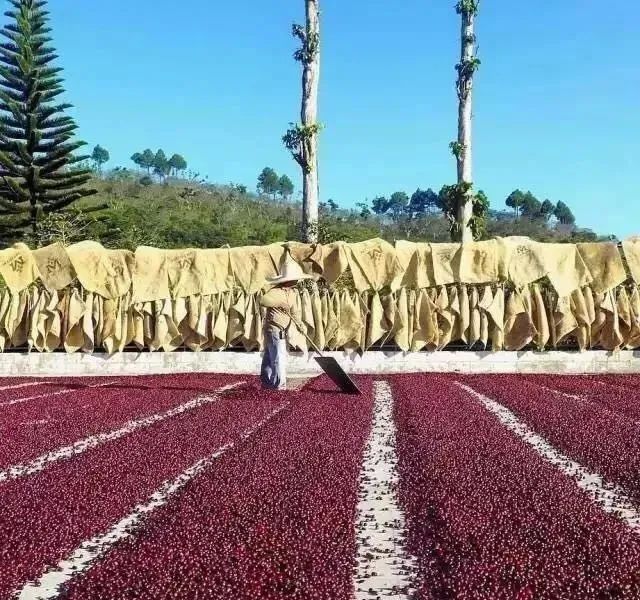
Roasting Analysis of Qianjie Coffee
First of all, Qianjie Coffee will look at the flavor description provided by the raw bean merchants, and then look at the moisture content of the beans. The raw beans just got have the fermented wine aroma of coffee flowers, which is completely different from the grass aroma of ordinary raw beans. Moreover, Sakuisheng beans of different sizes, and more tip of the head and tail (Ethiopia Heirloon Ethiopian original species), the moisture content is good, about 11%, but not the kind of SHB beans with high hardness, because of the high density and high hardness of beans, the dehydration time was lengthened before an explosion, and the loss of small molecules such as floral fragrance was retained as far as possible.
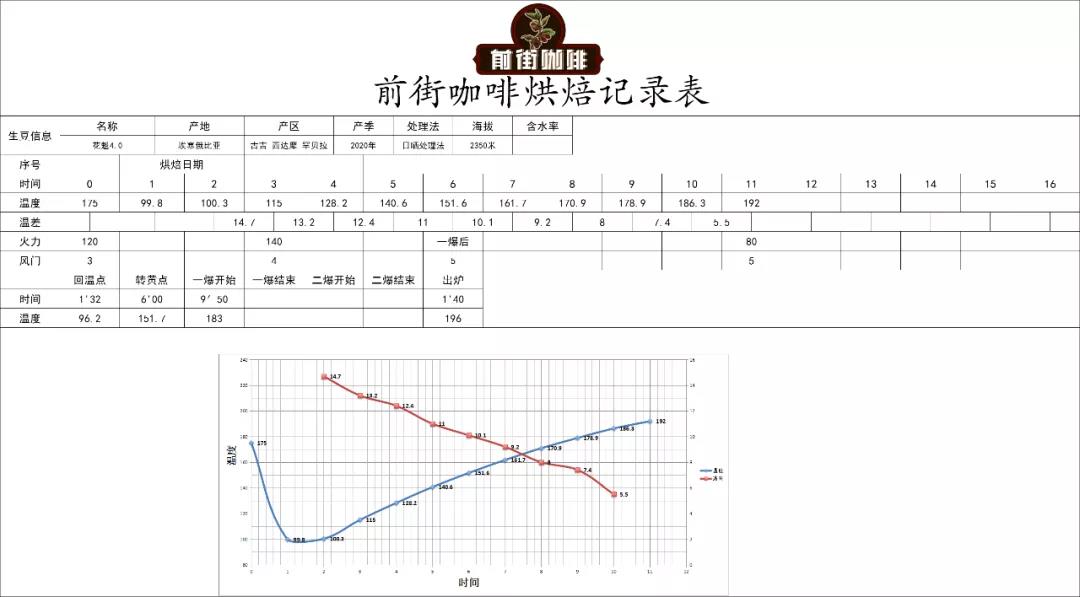
Suggestion on brewing coffee in Qianjie
In order to fully extract the rich layered sense of Sakuran, the front street uses higher water temperature and finer grinding degree for extraction, but in order to avoid over-extraction caused by high temperature, faster flow rate filter cups such as V60 filter cups will be used. The V60 filter cup is in a 60 °cone shape, and the tapered angle allows the coffee powder to be distributed centrally, and when water is injected, the water can automatically converge to the center of the filter cup to ensure that the contact time between the water and the coffee powder is sufficient, so that the appropriate coffee liquid can be extracted. In addition, the ribs on the inside of the body of the V60 filter cup extend clockwise from the bottom to the top, so that there is enough space between the filter paper and the filter cup, so that the flow of water is good. Coupled with the large holes in the bottom, the flow velocity is relatively faster than that of many filter cups.
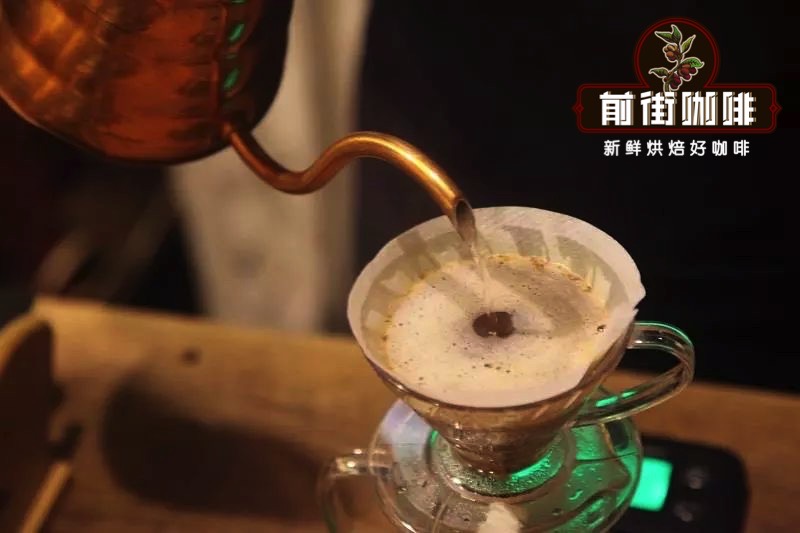
The specific cooking parameters used in Qianjie are: V60 filter cup, water temperature 90 ℃, water powder ratio 1:15, powder quantity 15g, grinding degree (China No. 20 standard sieve pass rate 80%)
Segmented extraction is used in the front street, the amount of steaming water is twice that of coffee powder, that is, 30 grams of water is steamed for 30 seconds, the small flow is injected around to 125 grams, and when the water level is about to expose the powder bed, continue to inject water to 225 grams to stop, the whole extraction time (including steaming time) is 2 minutes.
For more boutique coffee beans, please add private Qianjie coffee on Wechat. WeChat account: kaixinguoguo0925
Important Notice :
前街咖啡 FrontStreet Coffee has moved to new addredd:
FrontStreet Coffee Address: 315,Donghua East Road,GuangZhou
Tel:020 38364473
- Prev

The origin of the candle name of the American boutique coffee 90+ series, how does siphon Sidamo taste?
Ninety + Candlestick Ninety Plus Coffee, a boutique coffee supplier from the United States, was founded in 2006. in the ten years since its inception, Ninety + has made the coffee industry all over the world realize its unique charm and led the unprecedented boutique coffee craze in the world. Ninety + does not refer to all coffee with a score of more than 90. Good coffee, one year.
- Next
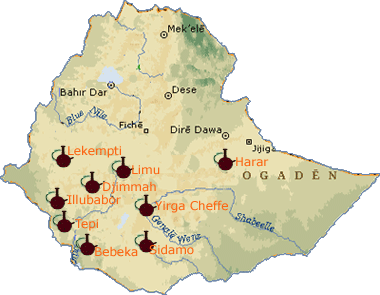
Why do 90 + candlelight Ethiopian boutique beans take a completely different approach in naming?
Question1: why are Ethiopian coffee beans always big and small? If you are very fond of African beans, it should be easy to find that Ethiopian beans are generally of different sizes and have significantly lower evenness than those in Kenya. Sometimes roasting appearance can be found in the observation of the same batch of coffee beans, no matter whether it is Yega Xuefei or Sidamo, whether it is washed or insolated.
Related
- Detailed explanation of Jadeite planting Land in Panamanian Jadeite Manor introduction to the grading system of Jadeite competitive bidding, Red bid, Green bid and Rose Summer
- Story of Coffee planting in Brenka region of Costa Rica Stonehenge Manor anaerobic heavy honey treatment of flavor mouth
- What's on the barrel of Blue Mountain Coffee beans?
- Can American coffee also pull flowers? How to use hot American style to pull out a good-looking pattern?
- Can you make a cold extract with coffee beans? What is the right proportion for cold-extracted coffee formula?
- Indonesian PWN Gold Mandrine Coffee Origin Features Flavor How to Chong? Mandolin coffee is American.
- A brief introduction to the flavor characteristics of Brazilian yellow bourbon coffee beans
- What is the effect of different water quality on the flavor of cold-extracted coffee? What kind of water is best for brewing coffee?
- Why do you think of Rose Summer whenever you mention Panamanian coffee?
- Introduction to the characteristics of authentic blue mountain coffee bean producing areas? What is the CIB Coffee Authority in Jamaica?

